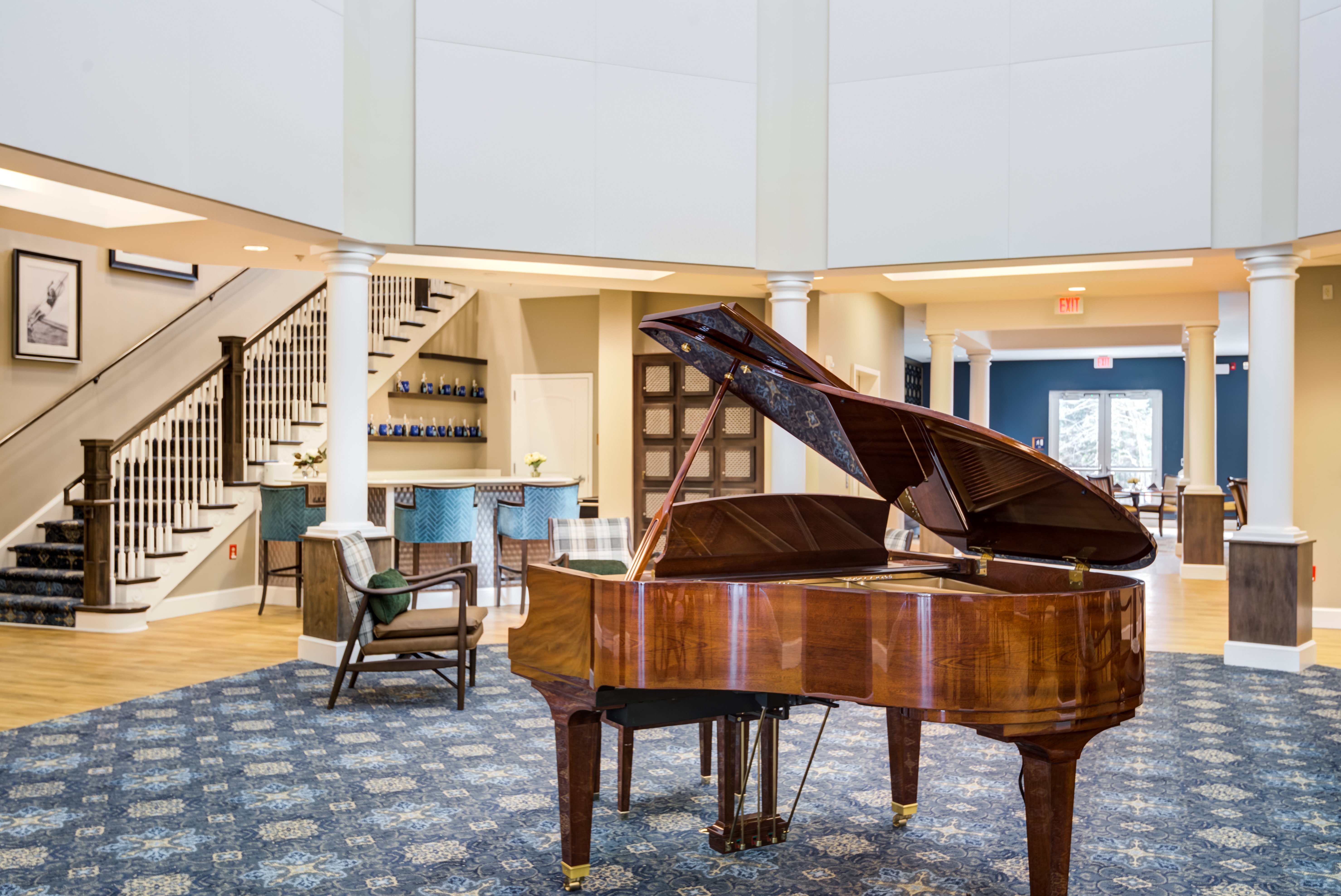How to Bring the Hype of Smart Home Features to Senior Living
When people think of smart home features, what comes to mind is usually tech-savvy millennials. They have smartphones and devices all synced up to...
.jpg)
Over the years, research has shown us just how reliant seniors have become on technology. Whether for entertainment, or for assisting in specific needs, digital tools have made it entirely possible for older adults to function as efficiently as possible.
As of 2019, reports have been published showing the number one thing seniors are looking for as they age is autonomy within a community.
And how do they opt to do this? Well, technology of course.
With the new year coming up quickly, we’re here to provide senior living technology trends to know for 2020 that increase autonomy in seniors.
Since baby boomers are coming into the age of needing assisted living, senior housing is popping up everywhere. And although that might sound great for senior living providers, it’s actually lowering visibility as competition is on the rise.
Because of this, communities are trying every which way to get themselves to stand out - most noticeably by using technology to cater to seniors' specific needs. This includes more memorable experiences, as well as tools leveraged to aid in easier day to day tasks.
Below we’ll discuss how this will impact current and future senior living technology trends.
A report by Perkins Eastman found in a 2019 survey that “almost 80% of respondents think technology, products and services that allow consumers to be autonomous and proactive in their care will have the most impact on the senior living market.”
So what can we assume senior living providers should leverage in the coming year?
Smart home features (or The Internet of Things) are increasingly attractive to senior renters. In fact, according to Pew Research Center, a 2017 report states that 90 percent of American households contain at least one device capable of streaming information.
But these features mean so much more to aging adults. Because of their convenience and ease-of-use, seniors won’t have to rely as much on memory or other individuals to achieve daily tasks - therefore increasing autonomy.
Some popular smart home features include household functions like light and temperature control through smartphone apps, and even automated security locks. But providing a wearable IoT for seniors will become best practice due to possible immobility.
.jpg?width=690&name=luke-chesser-rCOWMC8qf8A-unsplash%20(1).jpg)
Image credit: Photo by Luke Chesser on Unsplash
It’s also important to mention that just about 10 years ago, skilled nursing occupancy was at 90 percent. Today, however, senior living organizations struggle to find staff to fill vacant positions according to McKnight’s Senior Living.
So smart home features that simply complete automated tasks like locking a door can not only save limited staff’s time, but it provides the opportunity for independence that seniors are commonly looking for these days.
With this new client-faced revolution coming about, technology such as this will be extremely marketable for senior living communities.
There’s undoubtedly no demographic more in need of a completely digital home search than seniors.
Many senior living communities already utilize high-quality photography on their websites and Google My Business listings, but are still just dipping their toes in immersive content.
This type of content may include virtual tours, 3D renderings, virtual staging, and even virtual reality.

Referring back to a previous article, we talk about the specific needs of seniors like immobility and prevalence of out of state prospects. For this reason, providing the entire home search process online will allow seniors and their families to make an informed decision.
Considering the fact that senior living communities are integrating more amenities and activity centers, it’s an excellent time to leverage immersive content. Especially since off-season for renting is coming fast, it’s the perfect time to inquire about content that will benefit your community and its residents.
With improved personal living spaces being a necessity in senior living homes today, a virtual tour, or virtual reality tour through Google Cardboard on a smart phone will provide a fully immersive experience to seniors. They’ll be able to tour an entire community right on their mobile device.
Along with more client-facing technology comes utilizing mobile devices - a large part of modern-day seniors lives. Being mobile friendly could mean optimizing your website to function efficiently on a smartphone, or utilizing phones to interact with seniors more consistently.
As far as IoT goes, mobile devices can be utilized for those smart home features we mentioned earlier by connecting them to a wearable. That way everything is in one place, and it’ll be on a platform they’re already used to.
And for the home search process, with a majority of renters using a smartphone regularly to inquire about a community, having a fully-functioning mobile site will be pertinent to reaching seniors and their families. Just remember to keep up with speed and functionality.
With the decline in care providers plus seniors desire for autonomy, technology presents the perfect opportunity to give aging adults the independence they seek within a community.
Leveraging senior living technology trends such as digital tools and smart home features from the very beginning of a home search will show seniors that their needs are of utmost importance, and it will help your community stand out amongst all of the rest.
For more information on digital sales tools, click here.

When people think of smart home features, what comes to mind is usually tech-savvy millennials. They have smartphones and devices all synced up to...

Finding a senior living home for a loved one can be emotional, draining, and can even feel impossible. Consumers are tasked with finding a community...

SEO is never a one-time job. It requires constant upkeep, research and regular audits to ensure you’re on top of the latest trends.